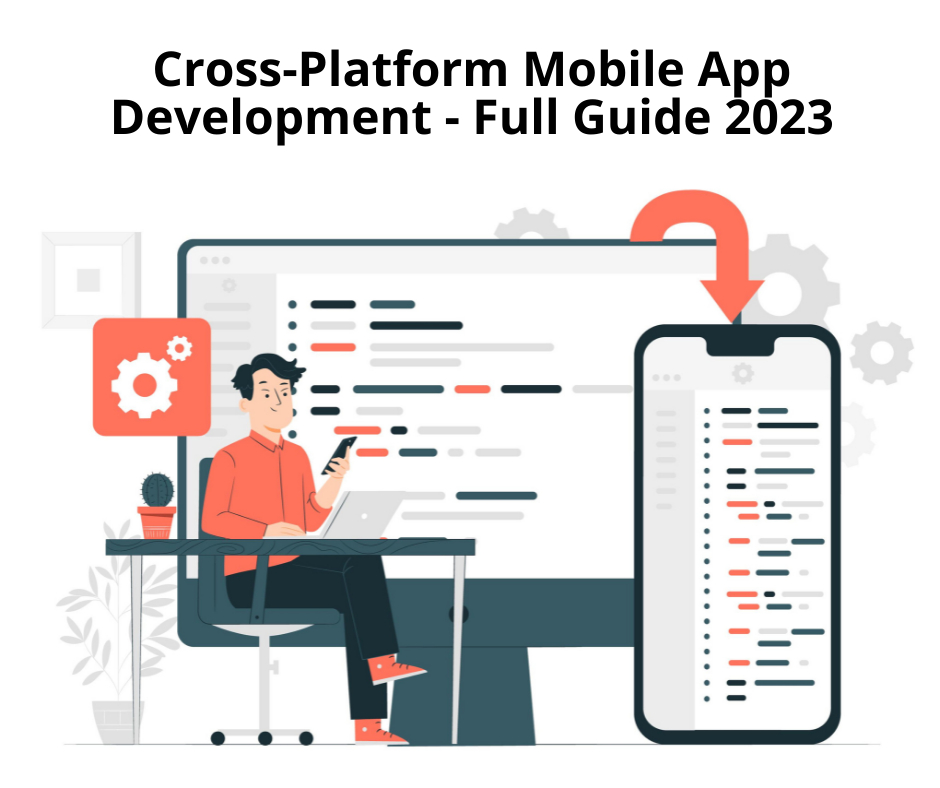Cross-platform mobile app development refers to creating apps that run on multiple mobile operating systems, such as iOS and Android, using a single codebase. The goal of cross-platform development is to reduce the time and cost of app development by avoiding the need to build separate versions of the app for each platform. Various tools and frameworks are available for cross-platform app development, including React Native, Xamarin, Flutter, and Ionic.
The iOS vs. Android debate first came to light when Android became one of the most popular and extensively used mainstream mobile platforms. According to Statista, Google Android and Apple iOS account for 99% of the global mobile OS market share. Initially, mobile app developers focused on designing native applications (platform-specific) that were not functional on multiple systems. This is how cross-platform mobile app development came to play.
What is cross-platform development?
Cross-platform development refers to creating software applications that run on multiple operating systems and devices without needing platform-specific adaptations. The goal of cross-platform development is to write code once and have it work seamlessly on multiple platforms, reducing development time, effort, and costs. This can be achieved using various technologies, including HTML5, JavaScript, and cross-platform frameworks like React Native, Xamarin, Flutter, and Ionic.
Cross-platform mobile app development solves these challenges. Simply, it facilitates the creation of apps that can run seamlessly across multiple platforms. Here, developers write the code in one language and then compile it for different platforms using their native libraries. Thus, a single code works for various operating systems. Cross-platform mobile app development is a flexible and highly cost-efficient option for mobile app development firms.
Why opt for cross-platform mobile app development?
As mentioned earlier, cross-platform mobile app development helps reduce the time and costs of developing mobile apps for different platforms.
There are several benefits to choosing cross-platform mobile app development:
- Cost savings: Developing a single app for multiple platforms is often more cost-effective than developing separate apps for each platform.
- Time efficiency: Cross-platform development allows you to write code once and have it run on multiple platforms, reducing development time and effort.
- Wider audience reaches: By supporting multiple platforms, cross-platform apps can reach a wider audience and potentially increase user acquisition.
- Consistent user experience: Cross-platform development can ensure a consistent user experience across all platforms, helping to establish and maintain a strong brand image.
- Easier maintenance: Updating a single codebase is more accessible than updating multiple platform-specific codebases.
- Access to shared resources: Cross-platform development can allow for sharing resources and code between different platforms, making it easier to build and maintain your app.
Cross-platform mobile app development makes the process of code inspection much more manageable. Developers can perform comprehensive testing for cross-platform apps to study their behavior in different environments. If the code inspection process identifies any bugs or issues with the UI and app performance, developers can only make the changes in the shared codebase. Thus, there’s no need to write separate unit tests for individual systems. Willing to develop a cross-platform mobile app for your business? Consult with react native development agency for the same.
To conclude, cross-platform app development sure has numerous benefits. However, it is essential to acknowledge that it is only the befitting option for some cases. For instance, for mobile apps that require highly platform-specific functionalities and features, native app development is the ideal choice.
Trends of cross-platform mobile app development?
The following are some of the current and emerging trends in cross-platform mobile app development:
- Low-Code Platforms: Low-code platforms are becoming increasingly popular for cross-platform app development, allowing developers to build apps faster and more efficiently.
- Flutter: Flutter, a UI toolkit from Google, is rapidly gaining popularity among developers due to its fast development cycle and flexible architecture.
- AI and Machine Learning: AI and machine learning technologies are being increasingly integrated into cross-platform apps to provide enhanced user experiences and increased automation.
- 5G Support: With the widespread adoption of 5G networks, cross-platform apps are expected to become even more powerful, with increased speed and performance.
- Internet of Things (IoT): Cross-platform app development is also being used to build applications for IoT devices, allowing developers to easily create apps that can control and interact with connected devices.
- Progressive Web Apps (PWAs): PWAs are becoming a popular alternative to native apps, offering a fast and seamless user experience without needing installation.
These trends will continue shaping the cross-platform app development landscape in the coming years. Developers must stay updated to use the best project technologies and approaches.
Conclusion:
Cross-platform mobile app development is a growing trend in the mobile app industry, offering several benefits, including cost savings, time efficiency, wider audience reach, consistent user experience, and easier maintenance. With the advent of low-code platforms, Flutter, AI and machine learning, 5G support, IoT, and PWAs, cross-platform app development are becoming more sophisticated and versatile. As the mobile app market continues to evolve, cross-platform development is likely to play an increasingly important role in the development of mobile apps. Developers who stay updated on the latest trends and technologies are best positioned to take advantage of the opportunities offered by cross-platform development.

